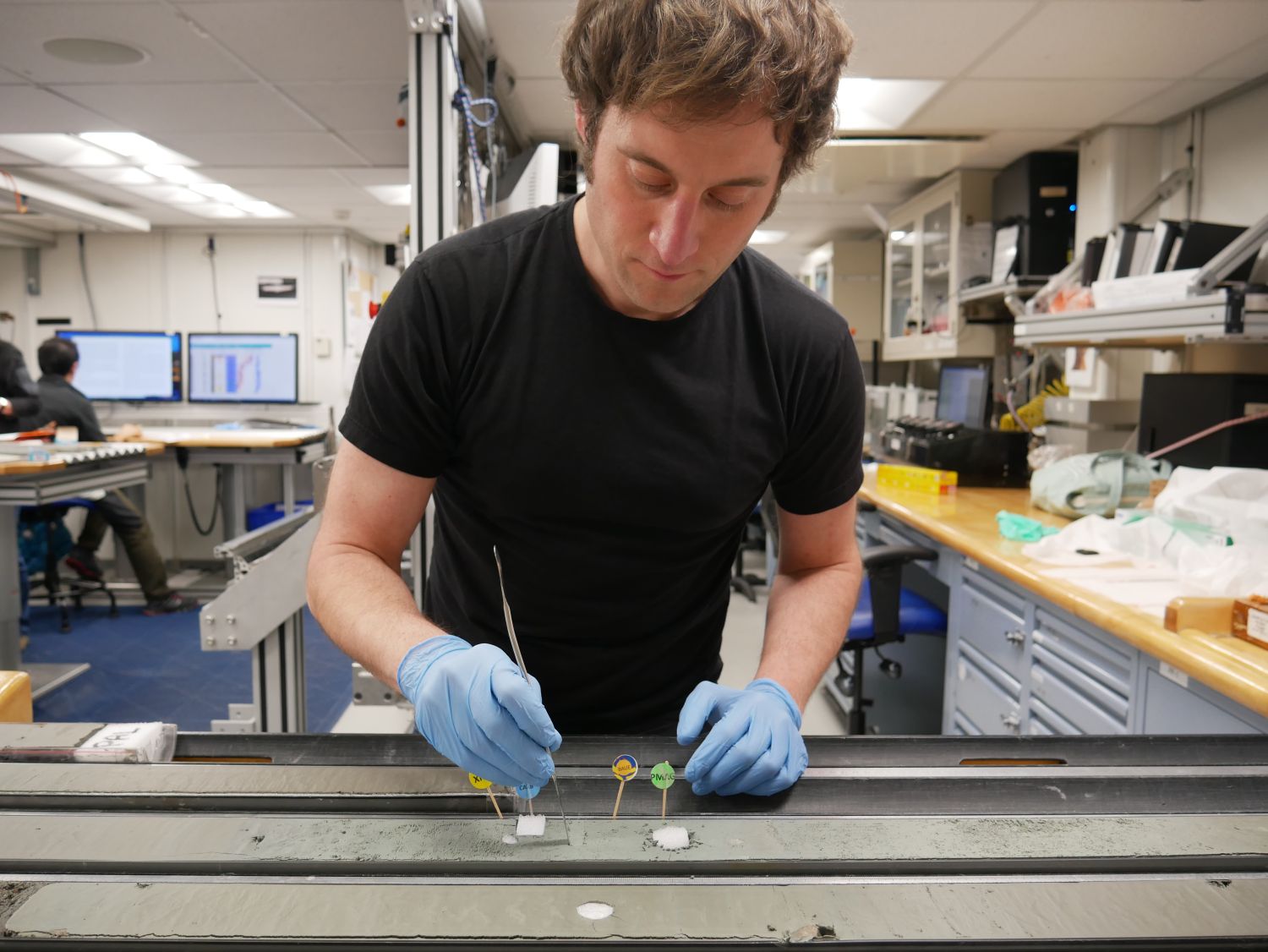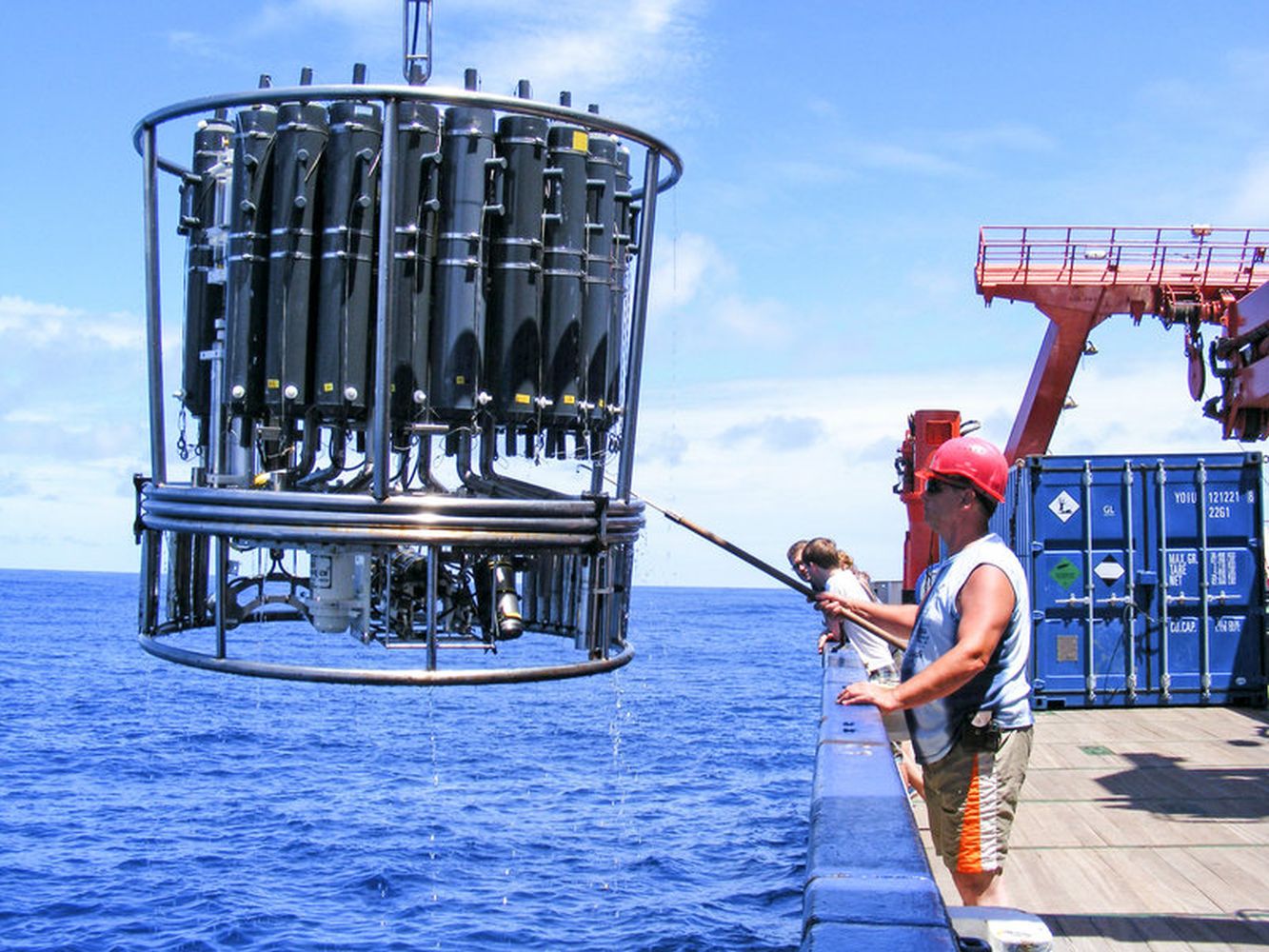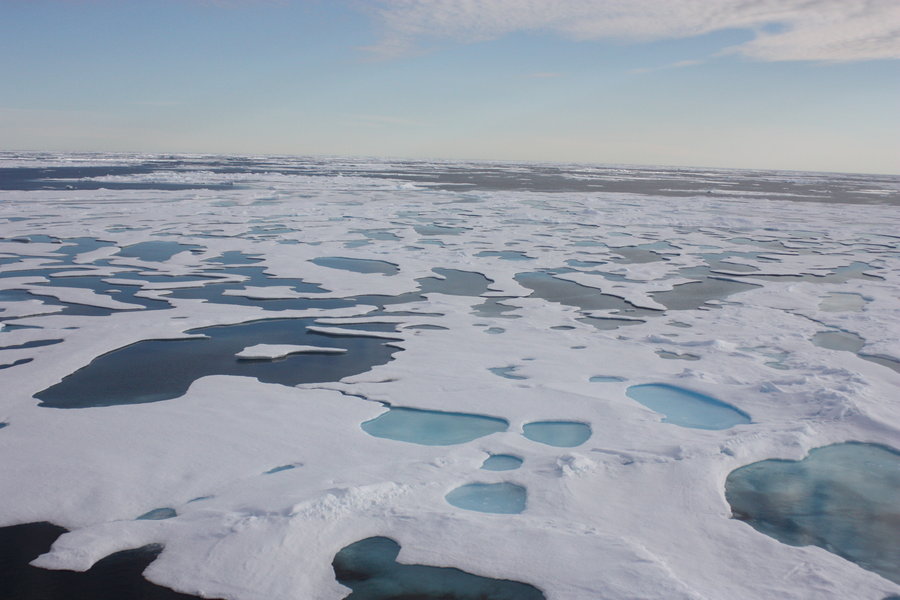The Amundsen Sea is a marginal sea on the west coast of Antarctica, several hundred kilometers from the nearest research station. It is a region most strongly affected by retreating ice and therefore plays an important role in prognoses for future sea level rise. If the Amundsen Sea and western Antartica were completely ice free, scientists believe that the global sea level could rise by up to four meters. Information on the influence of climate and ocean circulation change on the ice sheet history of western Antarctic and its ecosystems is stored in sediments, which will be drilled during the eight-week expedition.
The geoscientist Dr. Thorsten Bauersachs from Kiel University will investigate sediments, which are recovered from several hundred meters depth. "About 50 million years ago the global climate was distinctly warmer than in current times and Antarctica was almost ice free. Based on the sediment cores, which we will gain during the expedition and will look at more closely in our lab, we can almost completely reconstruct the climate history of western Antarctica" states Dr. Thorsten Bauersachs from the Institute of Geosciences at Kiel University and a member of the Cluster of Excellence "Future Ocean". "These findings are critical for understanding this highly sensitive region more clearly. This is the only way to establish a solid data foundation for prognoses on the future development of the western Antarctic Ice Sheet and therefore global sea-level rise."
The 143-meter-long research vessel JOIDES Resolution is specifically equipped for the drilling of several kilometers deep sediment cores and is in the Amundsen Sea for the first time.
For more information on Expedition 379 of the JOIDES Resolution:
https://joidesresolution.org/expedition/379
Background information:
Thorsten Bauersachs is a scientist at the Institute of Geosciences at Kiel University and also a member of the Cluster of Excellence "Future Ocean". For his work on paleoceanography, paleoclimate reconstructions and microbiochemical processes and their influence on nutrient cycling, he regularly joins research expeditions. His research also focuses on the investigation of cyanobacteria in global biogeochemical cycles, which may also form so-called blue-green algal blooms in the Baltic Sea.
The International Ocean Discovery Program funds expeditions aiming to investigating climate history recorded in sediments and rock formations under the seafloor. The funds are provided by the National Science Foundation (NSF) and its international partners - the Australia New Zealand IODP Consortium (ANZIC), the European Consortium for Ocean Research Drilling (ECORD), the Indian Ministry of Earth Sciences (MoES), the Japanese Ministry for Education, Culture, Sport, Science and Technology (MEXT), the Korean Institute of Geosciences and Mineral Resources (KIGAM) and the Ministry of Science and Technology (MOST) of the Peoples Republic of China.
Links:
www.futureocean.org Cluster of Excellence "Future Ocean"
www.kms.uni-kiel.de Research Priority Area Kiel Marine Science (KMS) at Kiel University
www.geochemie.ifg.uni-kiel.de/de/mitarbeiter/dr-thorsten-bauersachs Website of Dr. Thorsten Bauersachs
Contact:
Dr. Thorsten Bauersachs
Institute of Geosciences, CAU
Tel.: +49 431 880-3694
thorsten.bauersachs@ifg.uni-kiel.de
Friederike Balzereit
Public Outreach
Cluster of Excellence „Future Ocean"/ Kiel Marine Science (KMS)
Tel.: +49 431 880-3032
fbalzereit@uv.uni-kiel.de
…



